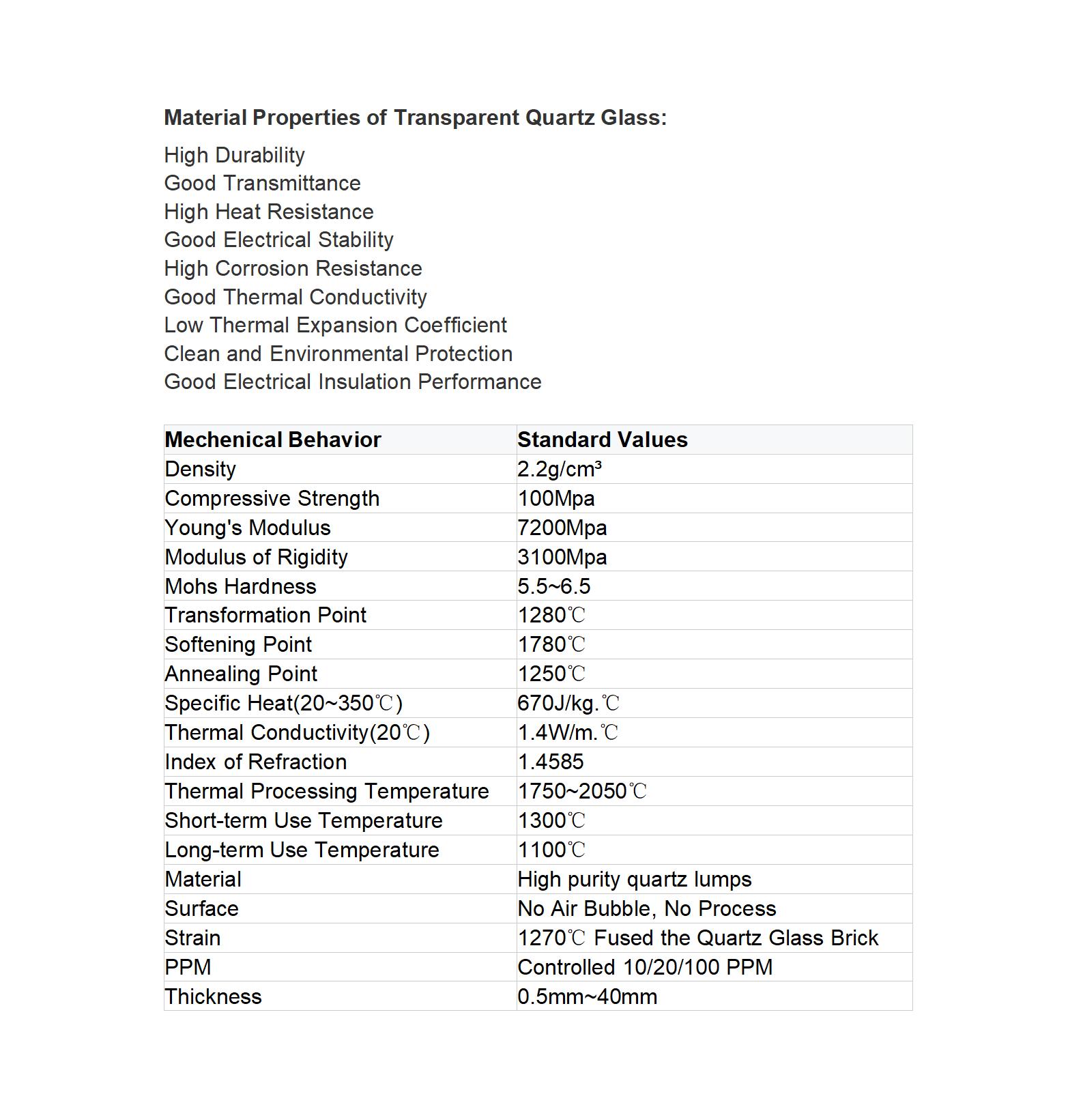T: +86-518-85528012
E: nick@luverrequartz.com
E: nick@luverrequartz.com
1st floor Runlian industrial center No. 116 QuFeng Rd., Haizhou Economic and technological development zone Lianyungang City, Jiangsu Province, China 222062
High purity vacuum tube furnace quartz glass pipe
High purity vacuum tube furnace quartz glass pipe is a very important equipment component in the fields of materials science and engineering.
LUVERRE quartz
99.99%
Inner with Vacuum PVC bag and then wrapped with air bubble film, outer with wooden box.
as per customer's requirement
| Availability: | |
|---|---|
High purity vacuum pipe furnace quartz glass pipe
High purity vacuum pipe furnace quartz glass pipe is a very important equipment component in the fields of materials science and engineering. The core of this device lies in its unique heating and vacuum system, which uses high-purity quartz pipes as reaction chambers. Quartz material, due to its excellent high temperature and corrosion resistance, can withstand harsh conditions in high-temperature environments while ensuring the cleanliness of the furnace environment. Heating systems usually use resistance wires or graphite heating elements, which are precisely adjusted by intelligent temperature control systems to achieve rapid response and stable control of the temperature inside the furnace. The vacuum system is the key to ensuring a low oxygen and impurity free environment inside the furnace. By combining mechanical pumps with molecular pumps, the pressure inside the furnace can be effectively reduced to extremely high vacuum levels, providing an ideal reaction environment for material processing.

In addition, the high vacuum pipe furnace uses high-purity quartz pipes or high-purity alumina pipes as furnace pipes, with a working temperature range of 300-1400 ℃. Customers can choose according to their actual needs. This series of equipment is characterized by safety and reliability, simple operation, high temperature control accuracy, good insulation effect, high furnace temperature uniformity, and the ability to evacuate the atmosphere. It is widely used in universities, research institutes, industrial and mining enterprises for high-temperature sintered metal material processing experiments, quality testing, and small-scale production.

High purity vacuum pipe furnace quartz glass pipes not only play an important role in the fields of materials science and engineering, but also have a wide range of applications in many high-end technology industries and scientific research fields.
High purity vacuum pipe furnace quartz glass pipe
High purity vacuum pipe furnace quartz glass pipe is a very important equipment component in the fields of materials science and engineering. The core of this device lies in its unique heating and vacuum system, which uses high-purity quartz pipes as reaction chambers. Quartz material, due to its excellent high temperature and corrosion resistance, can withstand harsh conditions in high-temperature environments while ensuring the cleanliness of the furnace environment. Heating systems usually use resistance wires or graphite heating elements, which are precisely adjusted by intelligent temperature control systems to achieve rapid response and stable control of the temperature inside the furnace. The vacuum system is the key to ensuring a low oxygen and impurity free environment inside the furnace. By combining mechanical pumps with molecular pumps, the pressure inside the furnace can be effectively reduced to extremely high vacuum levels, providing an ideal reaction environment for material processing.

In addition, the high vacuum pipe furnace uses high-purity quartz pipes or high-purity alumina pipes as furnace pipes, with a working temperature range of 300-1400 ℃. Customers can choose according to their actual needs. This series of equipment is characterized by safety and reliability, simple operation, high temperature control accuracy, good insulation effect, high furnace temperature uniformity, and the ability to evacuate the atmosphere. It is widely used in universities, research institutes, industrial and mining enterprises for high-temperature sintered metal material processing experiments, quality testing, and small-scale production.

High purity vacuum pipe furnace quartz glass pipes not only play an important role in the fields of materials science and engineering, but also have a wide range of applications in many high-end technology industries and scientific research fields.